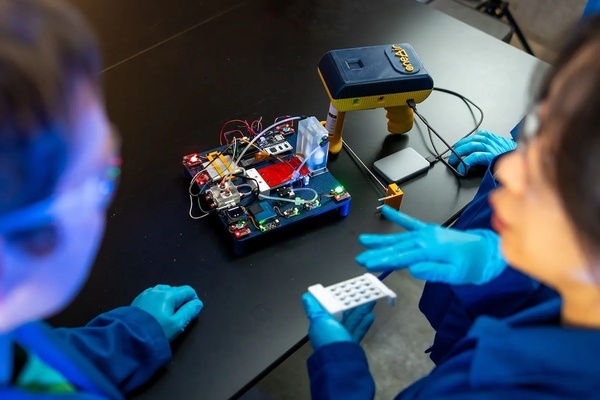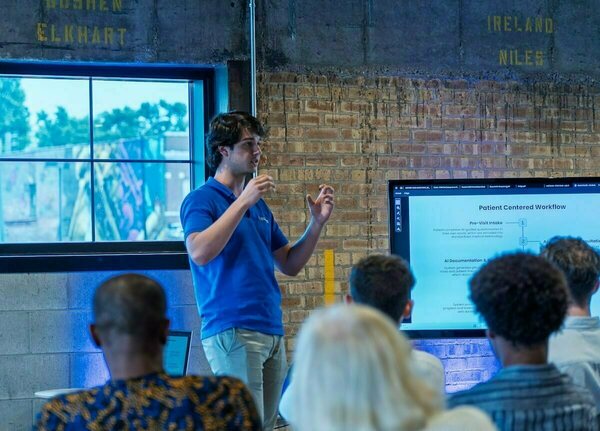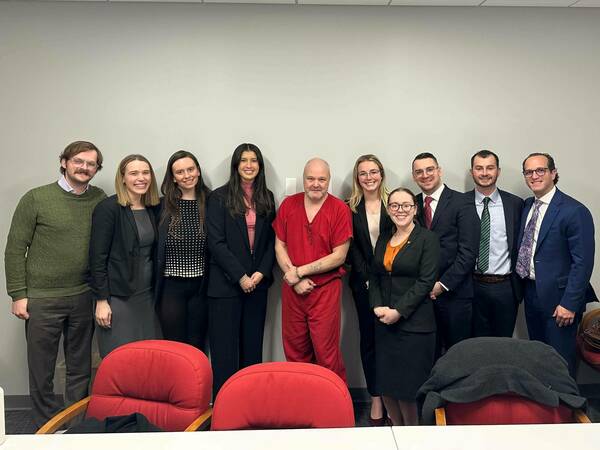A Notre Dame Summer Engineering student returns to Kylemore to model the unique Gothic chapel
Evan Johnston first visited Kylemore with the 2023 Summer Engineering & Environmental Science Program. While here, he visited the iconic Kylemore Gothic chapel. Little did he know he would get to know it much more intimately in the future!

In 2024, Evan had the opportunity to return to Kylemore and work on a research project funded by the Nanovic Institute. "The purpose of the research project is to establish an efficient and reliable photography process which could be easily adapted to photograph and model up to three thousand identified Irish church properties that are in danger of being sold, restored, or repurposed," Evan explains. In order to develop the models, Evan took over 10,000 photos.
Evan shares: "Kylemore Abbey is truly a place like no other. I've been blessed to spend four weeks at Kylemore studying abroad with Notre Dame and researching the digital modeling of the Gothic Chapel. Kylemore is an ideal retreat characterized by the peaceful, natural beauty of the adjacent lake and mountainous landscape, and the rich history memorialized in the estate's architecture and Victorian gardens. Its people are the pinnacle of hospitality and are more than happy to share the legacy of Kylemore with all visitors. I believe its continued success not only as a popular tourist attraction but also as a center of ministry and higher education are great fruits of the devout, discerning stewardship of the Benedictine community that calls Kylemore home. Thank you to the entire community for allowing us to experience the wonder of Kylemore while researching the Gothic Chapel as a reference point for future digital preservation of church architecture!"
Congratulations, Evan!
Originally published by at kylemore.nd.edu on December 17, 2024.
Latest Research
- Fighting for Better Virus DetectionAn electronic nose developed by Notre Dame researchers is helping sniff out bird flu biomarkers for faster detection and fewer sick birds. Read the story
- Notre Dame’s seventh edition of Race to Revenue culminates in Demo Day, a celebration of student and alumni entrepreneurship…
- Managing director brings interdisciplinary background to Bioengineering & Life Sciences InitiativeThis story is part of a series of features highlighting the managing directors of the University's strategic initiatives. The managing directors are key (senior) staff members who work directly with the…
- Monsoon mechanics: civil engineers look for answers in the Bay of BengalOff the southwestern coast of India, a pool of unusually warm water forms, reaching 100 feet below the surface. Soon after, the air above begins to churn, triggering the summer monsoon season with its life-giving yet sometimes catastrophic rains. To better understand the link between the formation of the warm pool and the monsoon’s onset, five members of the University of Notre Dame’s Environmental Fluid Mechanics Laboratory set sail into the Bay of Bengal aboard the Thomas G. Thompson, a 274-foot vessel for oceanographic research.
- Exoneration Justice Clinic Victory: Jason Hubbell’s 1999 Murder Conviction Is VacatedThis past Friday, September 12, Bartholomew County Circuit Court Judge Kelly S. Benjamin entered an order vacating Exoneration Justice Clinic (EJC) client Jason Hubbell’s 1999 convictions for murder and criminal confinement based on the State of Indiana’s withholding of material exculpatory evidence implicating another man in the murder.
- Notre Dame to host summit on AI, faith and human flourishing, introducing new DELTA frameworkThe Institute for Ethics and the Common Good and the Notre Dame Ethics Initiative will host the Notre Dame Summit on AI, Faith and Human Flourishing on the University’s campus from Monday, Sept. 22 through Thursday, Sept. 25. This event will draw together a dynamic, ecumenical group of educators, faith leaders, technologists, journalists, policymakers and young people who believe in the enduring relevance of Christian ethical thought in a world of powerful AI.

















